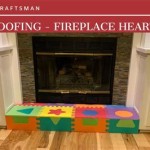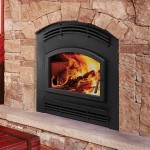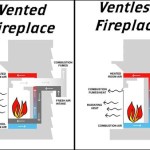Can You Paint a Brick Fireplace? A Comprehensive Guide
Painting a brick fireplace is a common renovation project undertaken by homeowners aiming to update the aesthetics of their living spaces. While brick offers a natural, rustic charm, it may not always align with evolving interior design trends or personal preferences. The decision to paint a brick fireplace involves careful consideration of several factors, including the condition of the brick, the desired aesthetic, and the potential long-term effects on the fireplace's structure. This article provides a comprehensive guide to painting a brick fireplace, outlining the preparation process, paint selection, application techniques, and potential challenges.
Assessing the Brick's Condition and Suitability for Painting
Before embarking on a fireplace painting project, a thorough assessment of the brick's condition is crucial. Damaged or deteriorating brick may not be a suitable candidate for painting, as the paint could exacerbate existing problems and lead to further deterioration. Signs of damage to look for include:
- Cracks: Significant cracks in the brick or mortar can indicate structural issues. Painting over these cracks will not fix the underlying problem and may even make them more visible over time.
- Spalling: Spalling refers to the flaking or crumbling of the brick's surface. This is often caused by moisture penetration and subsequent freeze-thaw cycles. Painting over spalling brick will only provide a temporary fix and the paint is likely to peel.
- Efflorescence: Efflorescence is a white, powdery deposit that appears on the brick's surface. It's caused by salt deposits migrating to the surface as water evaporates. Efflorescence needs to be thoroughly removed before painting to ensure proper paint adhesion.
- Existing Paint: If the brick has been previously painted, the condition of the existing paint layer must be evaluated. Peeling, chipping, or flaking paint needs to be removed before applying a new coat.
If the brick exhibits any of these issues, it's recommended to address them before proceeding with painting. This may involve repairing cracks, replacing damaged bricks, or cleaning the brick surface to remove efflorescence. In some cases, professional restoration may be necessary to ensure the long-term integrity of the fireplace.
Selecting the Right Paint and Primer
Choosing the correct paint and primer is vital for a successful and durable fireplace painting project. Not all paints are suitable for brick, and using the wrong type can lead to poor adhesion, peeling, and moisture problems. Important considerations when selecting paint include:
- Type of Paint: Latex-based paints are generally recommended for brick fireplaces due to their breathability. Breathable paints allow moisture to escape from the brick, preventing it from becoming trapped and causing damage. Avoid oil-based paints, as they can trap moisture and lead to spalling.
- Paint Finish: The choice of paint finish depends on the desired aesthetic and the level of durability required. Matte or flat finishes create a soft, non-reflective look, while satin or semi-gloss finishes offer greater durability and are easier to clean. High-gloss finishes are generally not recommended for brick fireplaces, as they can highlight imperfections.
- Heat Resistance: While the exterior of a fireplace typically doesn't reach extremely high temperatures, the paint should still be heat-resistant to prevent discoloration or blistering. Look for paints that are specifically formulated for use around fireplaces or high-heat areas.
- Primer: A high-quality primer is essential for ensuring proper paint adhesion to the brick surface. Primers create a uniform surface, seal porous areas, and block stains. For brick fireplaces, use a masonry primer that is designed to penetrate and bond to the brick.
Popular paint choices for brick fireplaces include acrylic latex paints and masonry paints. These paints offer good breathability, durability, and resistance to moisture and heat. When selecting a primer, opt for a latex-based masonry primer or a block filler primer, which is designed to fill in the pores and imperfections of the brick surface.
Preparing the Fireplace for Painting
Proper preparation is crucial for achieving a professional-looking and long-lasting paint job. The preparation process involves cleaning the brick, repairing any damage, and applying primer. The following steps should be followed:
- Cleaning: Thoroughly clean the brick surface to remove dirt, dust, soot, and any other contaminants. Use a stiff-bristled brush and a solution of TSP (trisodium phosphate) or a similar cleaning agent. Rinse the brick thoroughly with clean water to remove any residue. Allow the brick to dry completely before proceeding.
- Repairing: Repair any cracks or damaged areas in the brick or mortar. Use a masonry patching compound to fill in cracks and replace any loose or crumbling mortar. Allow the patching compound to dry completely according to the manufacturer's instructions.
- Removing Efflorescence: If efflorescence is present, remove it using a wire brush and a solution of muriatic acid diluted with water (follow safety precautions when handling muriatic acid). Alternatively, use a commercially available efflorescence remover. Rinse the brick thoroughly with clean water after removing the efflorescence.
- Masking: Protect the surrounding areas by masking off the walls, floor, and mantel with painter's tape and drop cloths. This will prevent paint from splattering or dripping onto unwanted surfaces.
- Priming: Apply a coat of masonry primer to the brick surface using a brush, roller, or paint sprayer. Ensure that the primer is applied evenly and covers all areas of the brick. Allow the primer to dry completely according to the manufacturer's instructions.
After completing these steps, the fireplace is ready for painting. Ensure that the brick is completely dry before applying the paint, as moisture can affect paint adhesion and durability.
Applying the Paint: Techniques and Considerations
Once the fireplace is properly prepared, the painting process can begin. The paint can be applied using a brush, roller, or paint sprayer. The choice of application method depends on the desired finish and the texture of the brick.
- Brush: A brush is ideal for painting brick fireplaces with intricate details or uneven surfaces. Use a high-quality paintbrush with synthetic bristles for latex-based paints. Apply the paint in thin, even coats, working it into the crevices and irregularities of the brick.
- Roller: A roller is a good option for painting large, flat surfaces. Use a roller with a nap that is appropriate for the texture of the brick. A thicker nap roller will be needed for rough or uneven surfaces, while a thinner nap roller can be used for smoother surfaces. Apply the paint in even strokes, overlapping each stroke slightly to ensure complete coverage.
- Paint Sprayer: A paint sprayer can be used to achieve a smooth, even finish on brick fireplaces. However, it requires careful masking and proper technique to avoid overspray. Use a paint sprayer specifically designed for latex-based paints and follow the manufacturer's instructions for setup and operation.
Regardless of the application method used, it's important to apply the paint in thin, even coats. Multiple thin coats are better than one thick coat, as they dry more evenly and are less likely to drip or sag. Allow each coat of paint to dry completely before applying the next coat.
Depending on the color and opacity of the paint, two or three coats may be necessary to achieve full coverage. Pay close attention to the mortar joints, as they can be difficult to cover completely. Use a small brush to touch up any areas that are missed by the roller or sprayer.
Addressing Potential Challenges and Troubleshooting
Painting a brick fireplace can present several challenges. Being aware of these potential issues and knowing how to address them can help ensure a successful project.
- Poor Adhesion: Poor paint adhesion is a common problem when painting brick fireplaces. This can be caused by inadequate surface preparation, using the wrong type of paint, or applying the paint to a damp surface. To prevent poor adhesion, ensure that the brick is thoroughly cleaned, primed, and dry before painting. Use a high-quality masonry primer and a latex-based paint that is specifically designed for brick.
- Peeling Paint: Peeling paint can occur if moisture becomes trapped behind the paint layer. This is more common when using oil-based paints or when painting over spalling brick. To prevent peeling paint, use a breathable latex-based paint and address any underlying moisture problems before painting.
- Efflorescence Reappearing: Efflorescence can reappear even after it has been removed. This is because the salt deposits are often embedded deep within the brick. To prevent efflorescence from reappearing, use a commercially available efflorescence blocker before priming and painting.
- Uneven Coverage: Achieving even paint coverage on a brick fireplace can be challenging due to the uneven surface and the difficulty of covering the mortar joints. To achieve even coverage, apply the paint in thin, even coats and use a brush to touch up any areas that are missed by the roller or sprayer.
If any of these problems occur, it's important to address them promptly to prevent further damage. Peeling paint should be scraped off and the surface should be re-primed and re-painted. Efflorescence should be removed and the area should be treated with an efflorescence blocker. Uneven coverage should be corrected by applying additional coats of paint.
By carefully considering the condition of the brick, selecting the right paint and primer, preparing the surface properly, and applying the paint using the correct techniques, homeowners can successfully paint their brick fireplaces and achieve a beautiful and durable finish. Addressing potential challenges proactively and troubleshooting any problems that arise will further contribute to a successful and satisfying renovation project.

How To Paint A Brick Fireplace What Use Home With Janny

How To Paint A Brick Fireplace

How To Paint Your Fireplace Brick Surround

Paint Your Brick Fireplace In 2 Easy Steps Birkley Lane Interiors

How To Paint Your Brick Fireplace Katie Lamb

How To Prep Brick Fireplace For Painting Et Painters

How To Prep Prime And Paint A Brick Fireplace Young House Love
How To Update A Brick Fireplace With Chalk Paint Diy Beautify Creating Beauty At Home

How To Paint A Brick Fireplace Kippi At Home

Painting Brick Fireplace White A Renovation Story
Related Posts








